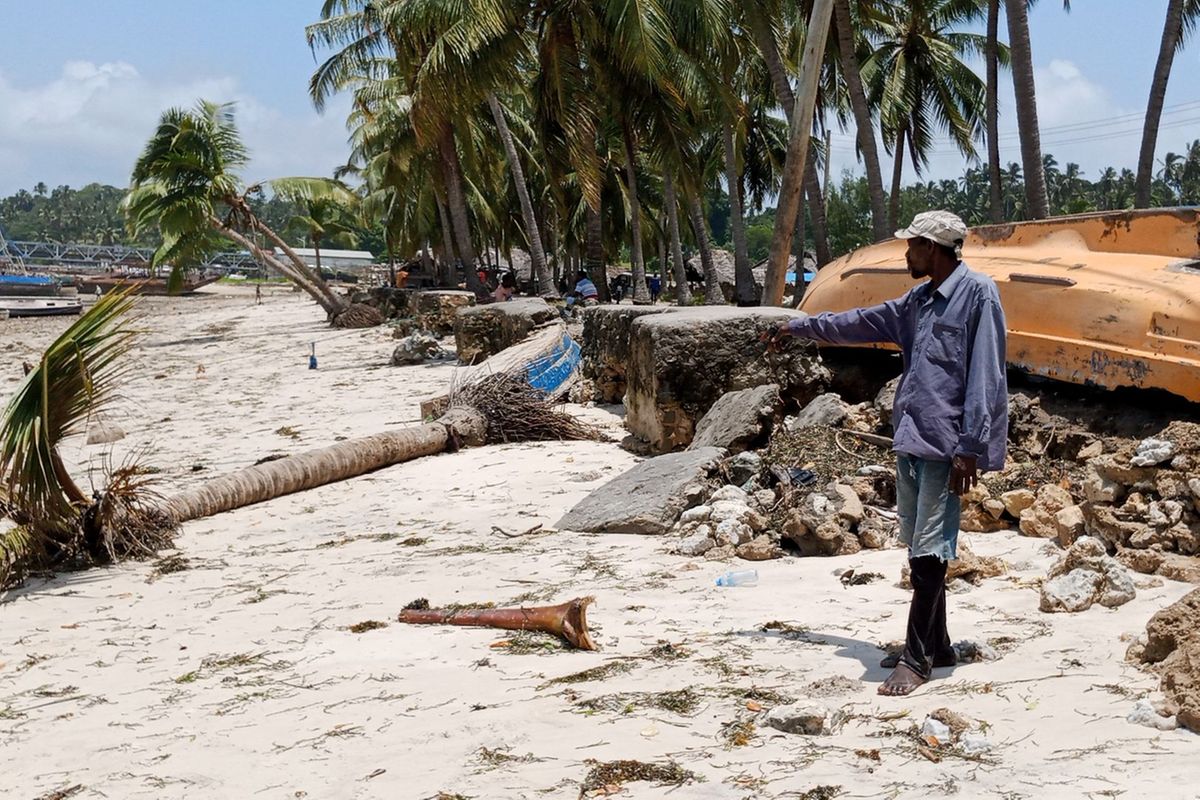By Florence Temu
As October approaches, all roads will lead to Zanzibar, the Indian Ocean archipelago, for the 11th Tanzania Health Summit. A thousand-plus health stakeholders from across 20 countries, including Tanzania will convene to discuss “Igniting progress: joining efforts for quality healthcare through public-private partnerships.”
This critical conversation comes at a time when governments worldwide are grappling with the pressing challenges of climate change. The World Health Organization (WHO) estimates that between 2030 and 2050, climate change will cause approximately 250,000 additional deaths per year from undernutrition, malaria, diarrhea, and heat stress alone. The direct damage costs to health are projected to be between US$2–4 billion per year by 2030.
During the summit, we will set the conversation on the urgent issue of climate change and its impact on including water security, food supply, and to the spread of vector-borne diseases in Tanzania, through a forum, titled: ” Strengthening Primary Health Facilities and Community Systems in Preparedness and Adaptation to Climate Change”.
In this forum, a team of experts and partners (from Amref, UNICEF, USAID, and Ministry of Health) will discuss in detail the preparedness and adaption processes in globally and in country as we strive to build climate resilient communities as well as their respective primary health care systems. By raising awareness, fostering collaboration, and promoting innovative solutions, we can work towards a healthier and more sustainable future for our country. Why?
Tanzania, including many African nations, are disproportionately affected by climate change despite contributing less than 10 percent of global greenhouse gas emissions. The Intergovernmental Panel on Climate Change (IPCC) confirms that climate-related illnesses, premature deaths, malnutrition, and threats to mental health are on the rise. Human activities have caused significant damage to ecosystems, leading to increased temperatures and extreme weather events such as droughts, floods, and hurricanes.
These occurrences have negatively impacted air, food, water, shelter, and social infrastructure, jeopardizing our health and existence.
The Sixth Assessment Report (AR6) of the IPCC highlights that in East Africa, malaria has spread to higher altitudes, while warmer temperatures are increasing infection rates. Rising temperatures are also contributing to spikes in cholera cases, particularly following tropical cyclones. Human mobility, water management, and sanitation practices further influence the transmission of vector-borne and waterborne diseases.
The frequent and intensified droughts and floods experienced in most parts of Africa are driving infections to new heights.
Heat-related deaths are also on the increase, with tens of millions of Africans exposed to extreme heat. For instance, the report finds that in South Africa, about 43.8% of heat-related deaths from 1991 to 2018 were attributable to climate change.
Additionally, climate change impacts agriculture through droughts and floods, leading to reduced food security and its cascading effects on nutrition. This has long-term consequences for child development, educational achievements, and pregnancy outcomes.
A worldwide study of 51 countries affected by the El Niño Southern Oscillation, most of which were in Africa, found that about 5.9 million additional children became underweight in 2015–2016. Africa is at risk of increased cases of malaria, waterborne diseases, malnutrition, and heat stress-related conditions. Extreme weather events can also cause serious damage to healthcare infrastructure, particularly in rural and peri-urban areas.
There are documented cases of floods and cyclones destroying health posts in affected communities. According to WHO, at least 56% of the 2121 public health events recorded between 2001 and 2021 were climate-related.
Floods can also damage other essential infrastructure at health facilities, compromising water treatment, sanitation facilities, and leading to disease outbreaks. The rate of temperature increase in Africa has accelerated in recent decades, making extreme weather events and climate hazards more severe.
The IPCC highlights that these impacts are unevenly distributed across and within societies and will continue to be experienced inequitably due to differences in exposure and vulnerability. Africa’s limited capacity to cope with cascading and compounding risks exacerbates this vulnerability.
Despite the dire situation, financing for climate adaptation remains insufficient. This scenario has made Africa one of the most vulnerable continents. With increased disease burden due to climate change, many African governments are stretched for resources, diverting funds from critical healthcare services to address climate change disasters.
Some countries are already spending as much as 9 percent of their Gross Domestic Products (GDPs) on climate adaptation support.
Climate change also disproportionately impacts the health of women and girls in marginalized communities, particularly in sub-Saharan Africa. Worsening climatic changes negatively affect gender inequalities, widening the g gap through socioeconomic, cultural, and physiological factors.
Several African countries are investing in climate-resilient health systems, such as renewable energy for health facilities, capacity building, and strengthening early warning systems.
The international community must continue to call for deep, rapid, and sustained reductions in greenhouse gas emissions (mitigation).
They must also commit to strengthening climate finance, technology transfer, and capacity building policies to maximize health gains from mitigation and adaptation actions. Close partnerships with indigenous peoples, local communities, women and girls, children and youth, healthcare workers, and vulnerable populations are essential.
Amref Health Africa Tanzania is implementing a strategic, integrated approach to combat climate-induced health challenges. At a broader picture, this strategy is addressing climate-related effects being major contributors of social determinants of health.
With emphasis on primary health care, on health systems and services delivery, while targeting infectious diseases, non-communicable diseases, diseases outbreaks, one-healthh, undernutrition, and gender disparities, to mention some, we are emphasizing on WASH interventions including infrastructures as we promote community resilience with deliberate adaptation interventions.
Through collective action with stakeholders on climate and health, we aim to drive more investments, bolster coordination, and propel evidence-based interventions. This will amplify our efforts in climate change mitigation and adaptation, ultimately fostering enduring health advancements.
The author is the Country Director for Amref Health Africa in Tanzania. The opinions expressed here are the author’s and don’t necessarily reflect the editorial position of The Citizen.














